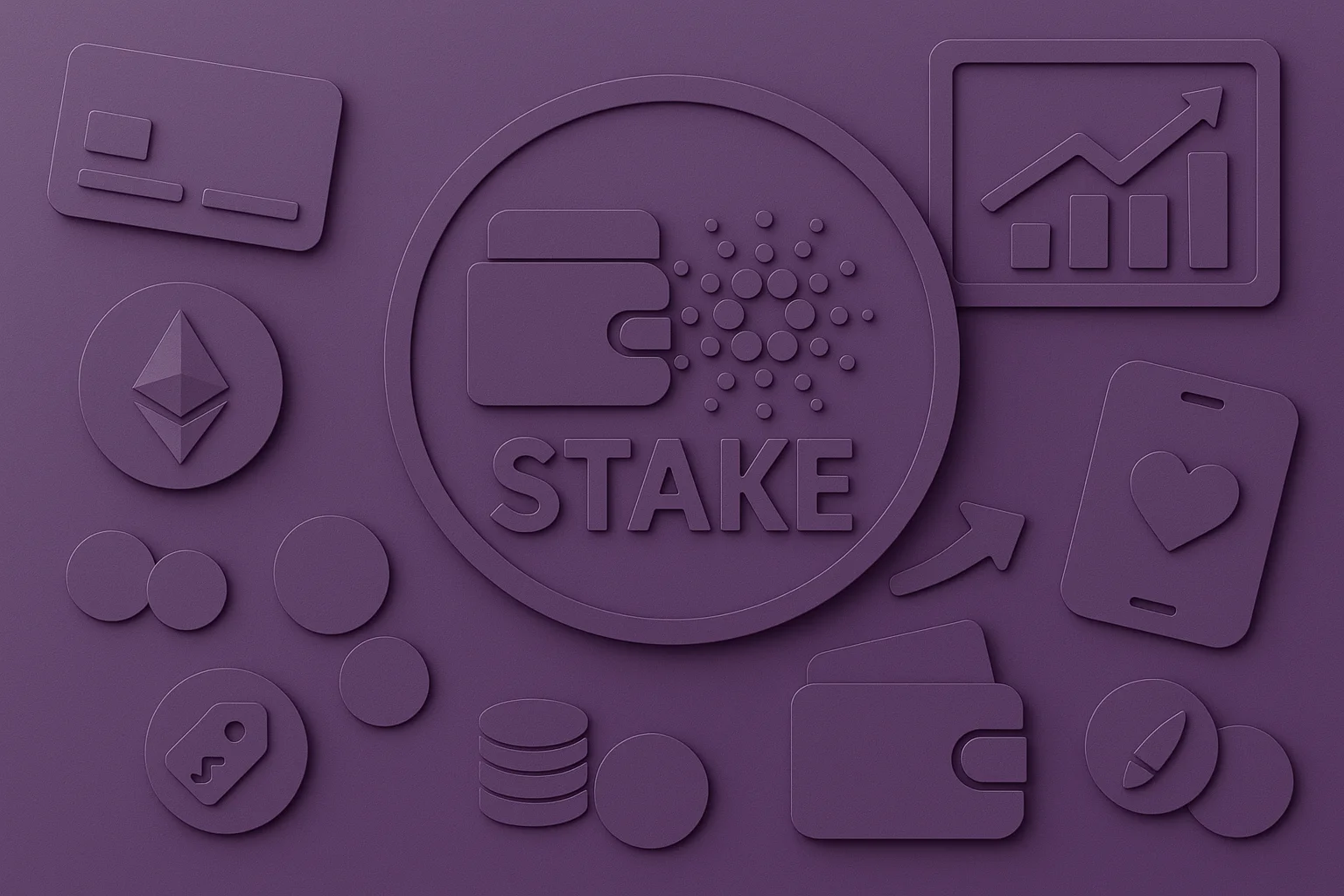How to Mint an NFT in 2025: Step-by-Step for Beginners
If you’ve ever searched for how to mint an NFT, you’ve likely found a maze of tutorials, jargon, and confusing fees. For beginners, the NFT minting process can feel overwhelming. Choose the wrong blockchain, and you might pay hundreds of dollars in transaction costs. Use the wrong marketplace and your NFT could get lost in […]
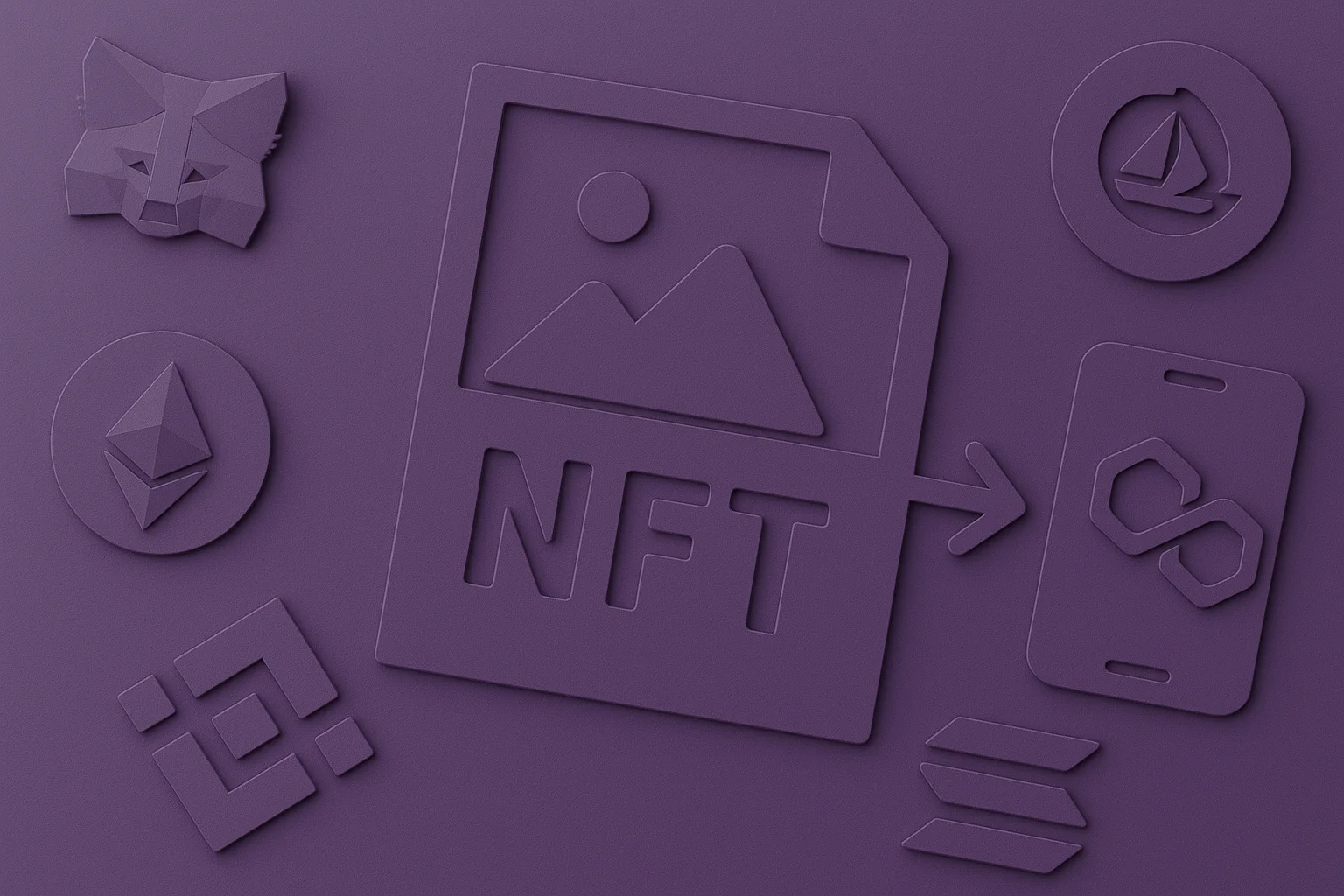
If you’ve ever searched for how to mint an NFT, you’ve likely found a maze of tutorials, jargon, and confusing fees. For beginners, the NFT minting process can feel overwhelming.
Choose the wrong blockchain, and you might pay hundreds of dollars in transaction costs. Use the wrong marketplace and your NFT could get lost in the crowd. Not knowing the steps can mean wasted time, money, and missed opportunities.
This comprehensive guide walks you through the entire process, from the general step-by-step journey to a practical example on OpenSea using MetaMask. You’ll also discover costs, blockchain platforms, and tips to make your NFT stand out.
NFT Minting: General Step-by-Step Guide
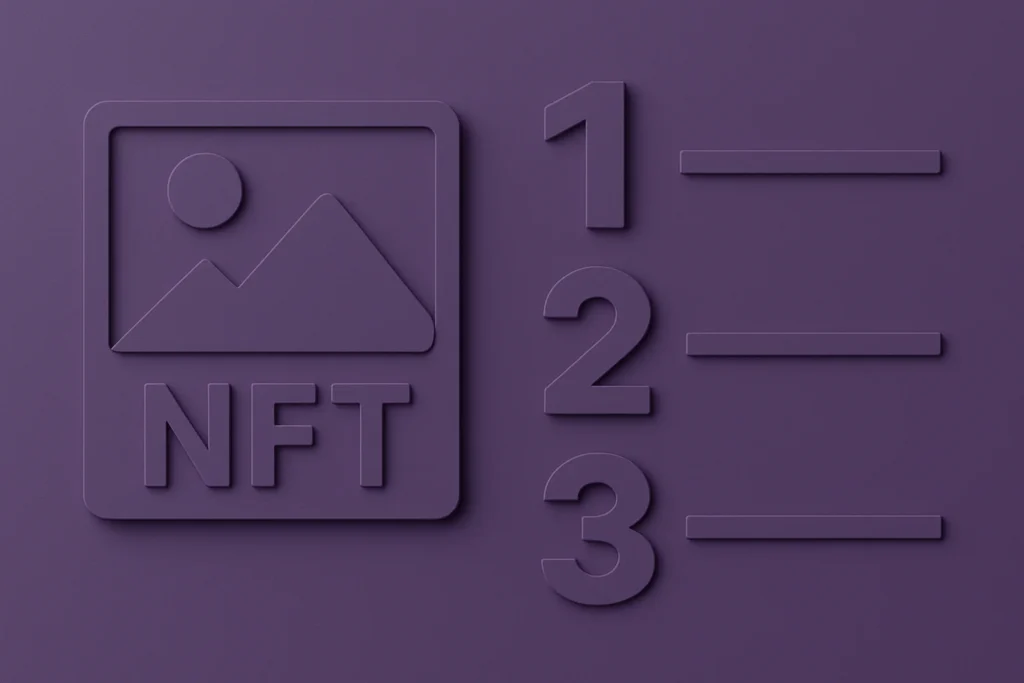
1. Prepare Your Digital Asset for NFT Minting
Your NFT begins with a digital file, such as artwork, a photo, a video, audio, or a document. Ensure it’s high-quality, in a supported format (e.g., JPG, PNG, GIF, MP4, MP3), and ready to upload. Many NFT creators start with digital artwork.
2. Select the Right Blockchain for Your NFT
NFTs live on blockchains. Ethereum is the most popular but has higher fees. Polygon, Solana, and BNB Chain are cost-effective blockchains. Some creators even explore the Binance Smart Chain for gaming and utility projects. Select options based on your budget, target audience, and the specific ecosystem you’re targeting.
3. Set Up a Crypto Wallet for Minting NFTs
You’ll need a wallet to interact with NFT marketplaces. MetaMask (for Ethereum and Polygon) or Phantom (for Solana) are popular choices. Safely back up your seed phrase, as this protects your account.
4. Choose the Best NFT Marketplace to Sell On
Marketplaces like OpenSea, Rarible, and Magic Eden make minting easy. Research which NFT platform supports your blockchain and offers the best visibility for your NFT collection. This decision can shape the long-term success of your NFT project.
5. Connect Your Wallet to the NFT Marketplace
Log in to your chosen platform and connect your crypto wallet. This will give you access to NFT creation tools and allow you to manage your assets securely.
6. Upload Your NFT File and Add Metadata
Upload your file and fill in details: title, description, and properties (traits). Metadata makes your NFT unique and more searchable, creating unique digital collectibles.
7. Mint Your NFT on the Blockchain
Click the mint button to create your NFT. On Ethereum, this usually requires gas fees. It can be free on Polygon or via lazy minting. Behind the scenes, smart contracts secure your asset, and minting costs can vary depending on network activity.
8. List Your NFT for Sale to the Public
Finally, list your NFT for sale. You can choose a fixed price or hold an auction. Once listed, your NFT will be available to collectors worldwide. Please note that listing fees and platform fees vary across different marketplaces.
How to Mint an NFT on OpenSea Using MetaMask
Step 1: Set Up Your MetaMask Wallet
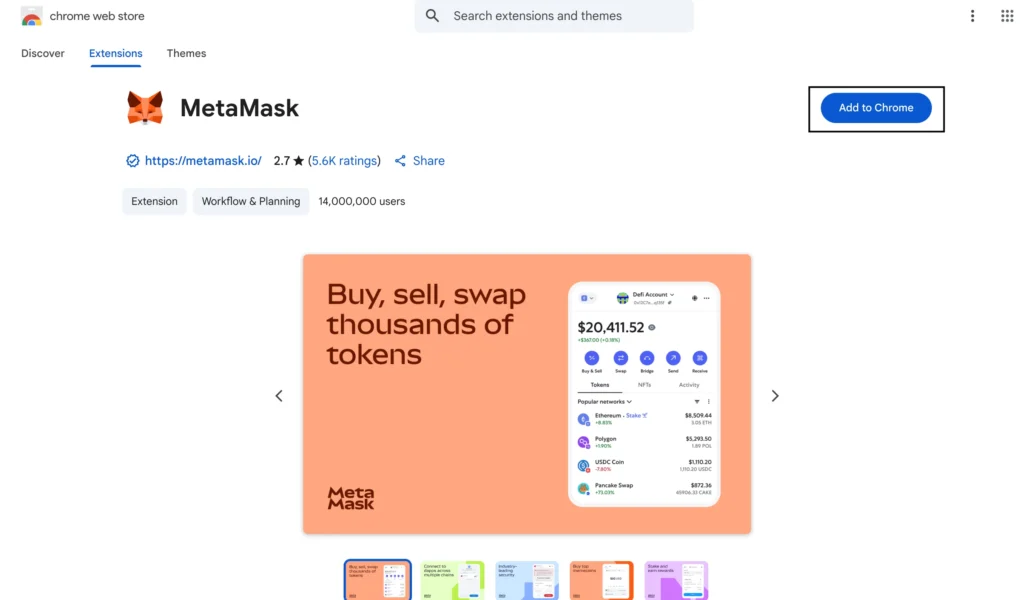
MetaMask is your gateway to Web3 and OpenSea.
- Install MetaMask as a browser extension (Chrome, Brave, Firefox) or mobile app.
- Create a wallet: choose a strong password and write down your seed phrase (keep it offline and never share it).
- Fund your wallet: Buy ETH directly in MetaMask or transfer it from an exchange like Coinbase or Binance.
Tip: If you choose Polygon or Base, you can mint with little to no gas fees compared to Ethereum.
Step 2: Connect MetaMask to OpenSea
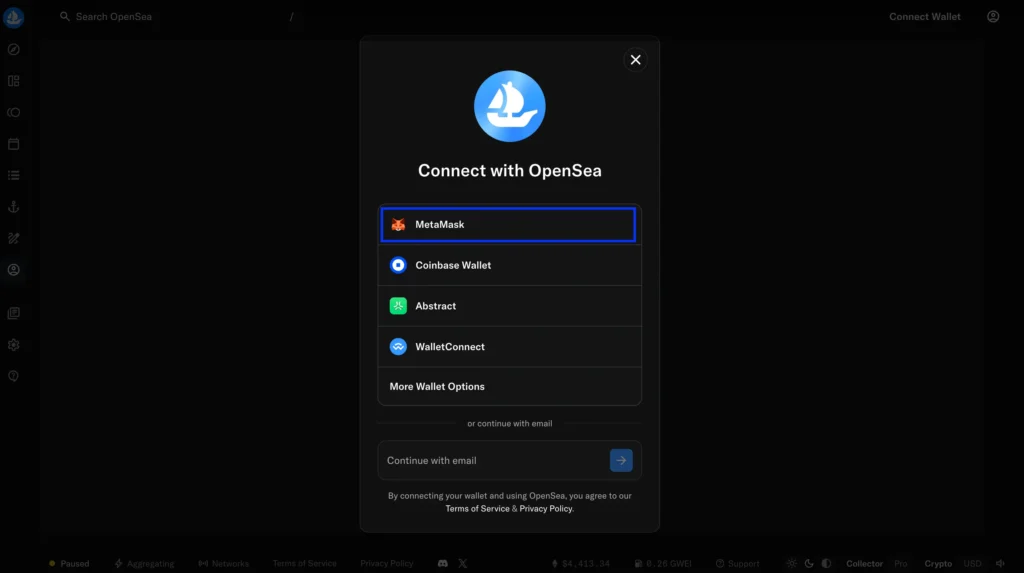
- Go to OpenSea.io.
- Click Wallet → MetaMask.
- Confirm the connection in your MetaMask app.
Your OpenSea profile is now live and linked to your Wallet.
Step 3: Create an NFT Collection
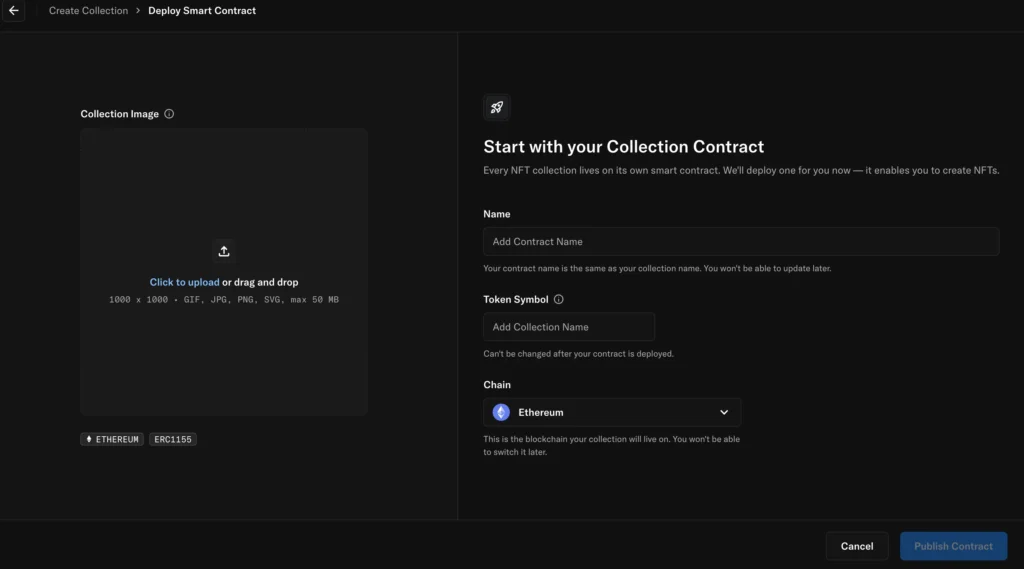
Before minting, you need a collection to house your NFTs.
- From your OpenSea profile, click “Create a Collection.”
- Upload visuals: logo, featured image, and banner.
- Fill out details:
- Collection name & description;
- Category (art, collectibles, music, photography, etc.);
- Blockchain (Ethereum, Polygon, Base, Arbitrum);
- Creator royalties (set at 5–10% on resales).
Tip: Collections with complete branding look more professional and attract more buyers.
Step 4: Mint Your NFT
Now it’s time to create your first token.
- Inside your collection, click “Add Item.”
- Upload your file (max 100MB); supported formats:
- Images: JPG, PNG, GIF.
- Video: MP4.
- Audio: WAV, MP3.
- 3D models: GLB, GLTF.
- Add metadata:
- Name & description.
- Properties/attributes (e.g., “Background: Red,” “Edition: 1 of 1”).
- Unlockable content (optional: secret files, codes, download links).
- Click “Create.”
- On Polygon/Base: Minting is free (lazy minting, NFT is only minted when sold).
- On Ethereum: Confirm transaction in MetaMask and pay gas fees.
Step 5: List Your NFT for Sale
- Open your newly minted NFT.
- Click “Sell.”
- Choose listing type:
- Fixed price (set price in ETH, MATIC, or other token).
- Auction (highest bidder wins within your chosen timeframe).
- Set listing duration (1 day, 1 week, 1 month).
- Confirm the listing in MetaMask.
Congratulations! Your NFT is live on OpenSea and ready for buyers.
Which Blockchain Should You Choose for Minting NFTs?
The blockchain you pick influences your NFT’s cost, speed, visibility, and audience. Here’s a breakdown of the most popular options:
Ethereum
Ethereum is the most established blockchain for NFTs. It powers top projects like Bored Ape Yacht Club and CryptoPunks, making it the go-to for prestige and collector trust. The downside? Higher gas fees and slower transaction times compared to newer chains.
Polygon
Polygon is built on top of Ethereum, offering faster and cheaper transactions. It’s eco-friendly and ideal for creators launching extensive collections. Since it’s integrated with OpenSea, Polygon NFTs still get strong visibility without high costs.
Solana
Solana is renowned for its speed and scalability, capable of handling thousands of transactions per second. Its NFT community, especially on Magic Eden, is active and fast-growing. It’s a great choice if you’re targeting younger, experimental collectors.
BNB Chain
BNB Chain is connected to Binance, one of the largest cryptocurrency ecosystems. It offers low fees and access to millions of crypto users. While not as established for art-driven projects, it’s useful for creators who want strong liquidity and mainstream reach.
How Much Does Minting an NFT Cost?
The cost of minting an NFT primarily depends on the blockchain and marketplace used. On Ethereum, gas fees are the most significant expense. Every transaction requires a payment to the network, and fees can range from approximately $5 during quiet periods to more than $100 during periods of high traffic.
Marketplaces also charge a service fee when your NFT sells. On OpenSea, this fee is around 2.5% of the final sale price. Other platforms may charge slightly more or less, depending on their policies.
If you want to save money, you have a couple of good options. One is to mint on cheaper blockchains like Polygon or Solana, where fees are only a fraction of Ethereum’s costs. The other is to use lazy minting.
What Is Lazy Minting and How Does It Work?
Lazy minting allows you to initially create and list NFTs without paying gas fees. Instead of being added to the blockchain immediately, the NFT is stored off-chain. It only becomes a true blockchain asset once a buyer completes the purchase, at which point the minting happens and the buyer pays the fee.
The process is straightforward on platforms like OpenSea or Rarible. You upload your file, add details such as name, description, and traits, and then list it for sale. The NFT remains off-chain until it is purchased, making this method a cost-effective entry point for creators.
Tips to Make Your NFT Stand Out
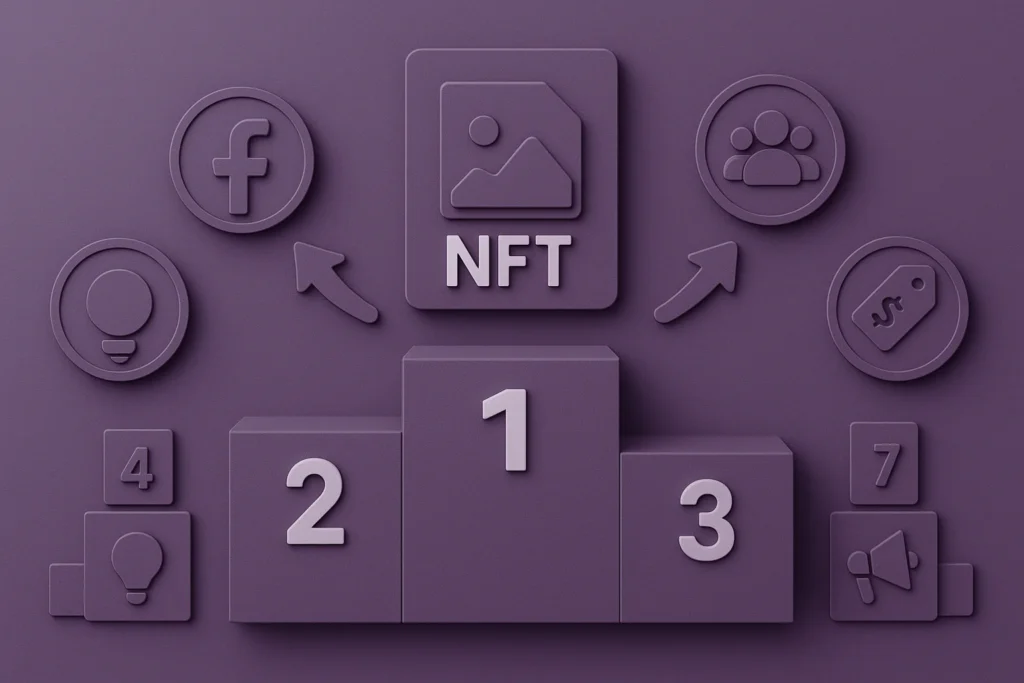
1. Share the Story Behind Your NFT
Collectors connect with more than just visuals. A meaningful backstory about your inspiration or creative process makes your NFT memorable and adds emotional value.
2. Build a Community Around Your Project
Community is key in the NFT world. Stay active on platforms like Twitter, Discord, or Telegram to interact with fans, share updates, and create excitement around your work.
3. Offer Extra Utility
NFTs that provide more than art often stand out. Consider adding unlockable content, exclusive event access, or membership perks that give buyers additional reasons to collect.
4. Collaborate With Other Creators
Partnerships help you expand your reach. Collaborate with artists, musicians, or influencers to tap into new audiences and enhance your credibility.
5. Keep Your Branding Consistent
A professional, cohesive look builds trust. Ensure your collection design, profile, and presentation feel unified and polished.
6. Stay Active After the Sale
Collectors value projects with long-term vision. Continue engaging your audience by releasing updates or new content, and demonstrate that your project is more than a one-time drop.
FAQ
What Does It Mean to Mint an NFT?
Minting an NFT involves creating a non-fungible token on the blockchain, thereby assigning it a unique identity and providing proof of ownership. This process turns your file (art, music, or video) into a verified collectible that can be sold or traded online.
What’s the Difference Between Minting and Listing?
Minting creates the NFT on the blockchain, while listing makes it available on a marketplace like OpenSea. In short, minting = creation, listing = selling.
What Are the Benefits of Minting an NFT?
Minting secures your digital work on the blockchain, proving authenticity and ownership. It also allows you to monetize your creation and earn royalties from future sales.
Do I Need Metamask to Mint an NFT?
MetaMask is the most popular wallet for minting NFTs on Ethereum and Polygon, but it’s not the only option. Other wallets like Phantom (Solana) or Trust Wallet (BNB Chain) also work, depending on your chosen blockchain.
Is Minting an NFT Taxable?
In most countries, selling or earning income from NFTs is considered taxable. Always check local tax laws to understand your obligations before minting or trading NFTs.
Final Thoughts
Learning how to mint an NFT doesn’t have to be intimidating. You can easily mint and list your first NFT by preparing your asset, choosing the right blockchain, and using beginner-friendly platforms like OpenSea with MetaMask.
Consider costs, explore lazy minting to save on fees, and focus on creating NFTs that stand out in the digital art market. With a clear understanding of the technical aspects, you’ll be ready to share your work with the world.



